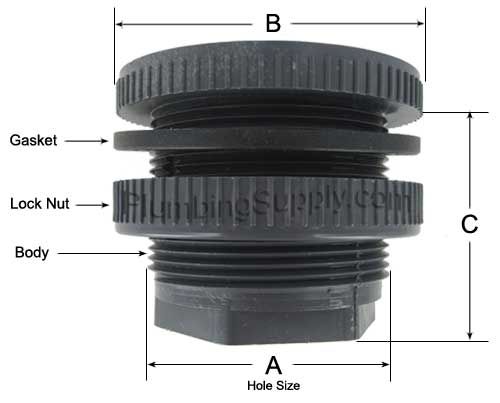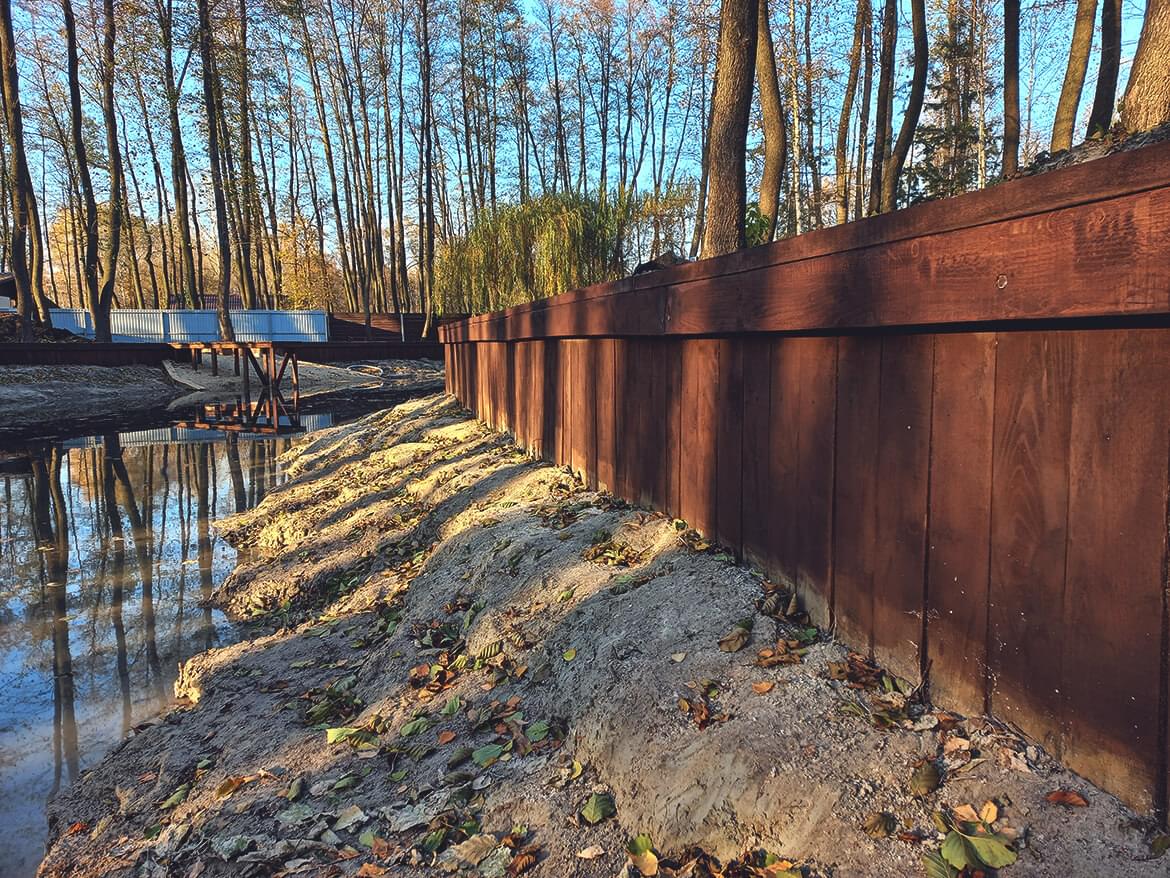Bulkhead on Lake Livingston and Its Role in Flood Defense Systems
Wiki Article
Exploring the Different Usages of Bulkhead Structures in Modern Design
Bulkhead frameworks play a substantial function in modern-day style, serving both visual and functional purposes. They can specify spaces, enhance storage solutions, and boost lights. In business setups, they act as centerpieces that show brand name identification - Bulkhead on Lake Livingston. In addition, their combination often supports sound monitoring and sustainable practices. Understanding the complete range of their applications exposes much regarding modern style patterns and user experience. What innovative uses of bulkheads might emerge in the future?Specifying Bulkhead Frameworks
Bulkhead frameworks play an essential role in modern-day design, offering as essential elements in numerous building designs. These frameworks are normally specified as increased ceilings or systems, commonly made use of to hide mechanical systems, circuitry, or plumbing. Bulkheads can be found in both commercial and domestic settings, where they offer a seamless blend of functionality and appearances. Their design can incorporate lights fixtures and various other decorative elements, improving the general visual charm of a room.Generally constructed from products such as steel, wood, or drywall, bulkheads can be tailored to fit the building design and needs of the building (Bulkhead on Lake Livingston). They offer not just to conceal unsightly infrastructure but additionally to produce specified zones within open areas. By managing the circulation of an area, bulkheads add to the spatial company, making them a substantial facet of modern building method. As a result, their definition envelops both useful and aesthetic measurements
Practical Applications in Residential Layout
Bulkhead structures play an essential function in domestic design by assisting in area optimization strategies that maximize useful locations. Additionally, they contribute visual layout aspects that improve the aesthetic allure of living areas. In enhancement, these frameworks provide vital structural assistance services, making sure the stability and safety of the home.Area Optimization Methods
As modern-day household styles increasingly focus on efficient use of area, ingenious techniques arise to make the most of capability without compromising aesthetics. One famous strategy involves the assimilation of bulkhead frameworks, which can mark areas while supplying important storage options. These frameworks can be employed to develop upright storage systems that improve both company and availability. In addition, multi-functional furnishings, such as collapsible tables and convertible couches, enhances bulkhead designs, allowing rooms to adjust to differing needs. Open up layout even more enhance spatial circulation, urging adaptability in operation. Integrating built-in shelving and recessed lights within bulkheads also adds to a structured environment, guaranteeing that every inch of area is utilized successfully and sympathetically within the total design.Visual Layout Components

Architectural Support Solutions
In modern household style, an effective structural support option is vital for maintaining the integrity of rooms while optimizing design and capability. Bulkhead frameworks play a considerable duty in this situation, offering as both support and dividing elements. They can hide mechanical systems, such as plumbing and electrical wiring, while giving support to the ceiling and floor systems. By purposefully placing bulkheads, designers can develop specified locations within open layout, boosting functionality without jeopardizing architectural stability. Additionally, these structures can fit lighting fixtures, adding to both appearances and usefulness. To sum up, bulkhead structures are important in residential design, supplying flexible assistance options that improve both the functionality and visual allure of living rooms.Enhancing Visual Appeals in Industrial Spaces
When industrial areas embrace cutting-edge bulkhead structures, they not just define physical boundaries yet likewise substantially improve the general visual appeals of the environment. These architectural elements work as visual prime focus, attracting focus and producing a feeling of intrigue. By including varied materials such as glass, timber, or metal, bulkheads can reflect a brand's identity and goal, adding to a natural design.In addition, the critical placement of bulkheads can manipulate light and shadow, adding depth and dimension to otherwise flat spaces. This interplay can transform a business area into a welcoming ambience, encouraging client involvement. In addition, the use of color and structure in bulkhead layout can evoke details emotions, improving the total customer experience. Ultimately, the thoughtful integration of bulkhead structures elevates the aesthetic appeal of commercial rooms, making them not only functional but likewise visually enchanting, thus cultivating a long lasting perception on site visitors.
Acoustic Performance and Noise Monitoring
Efficient acoustic efficiency plays a crucial role in modern-day design, especially within industrial spaces where sound management is vital. Bulkhead structures can greatly boost acoustic high qualities by absorbing noise, reducing reverberation, and mitigating sound transfer between locations. These functions are particularly useful in environments such as dining establishments, workplaces, and theaters, where clear communication and a positive acoustic experience are paramount.The strategic positioning and design of bulkheads can help create sound-buffer areas, effectively separating loud locations from quieter ones. Materials utilized in bulkhead construction, such as acoustic panels and soft finishes, add to their sound-dampening abilities. Furthermore, the incorporation of bulkheads enables for the assimilation of sound-absorbing elements without endangering aesthetic allure. By dealing with acoustic performance, architects can create unified settings that boost comfort, improve user experience, and advertise performance, making bulkheads an important part in the style of contemporary industrial rooms.
Integrating Bulkheads for Reliable Room Utilization
look at here now Typically overlooked, the integration of bulkheads in architectural layout can significantly boost space utilization in modern-day structures. These structural aspects serve numerous sensible purposes, using a way to hide mechanical systems, electric circuitry, and pipes without endangering looks. By tactically positioning bulkheads, designers can create specified locations within open layout, thus helping with far better company and flow.Moreover, bulkheads can integrate storage space options and lighting functions, taking full advantage of the capability of or else squandered upright space. In domestic settings, they may define areas such as kitchens or living locations, while in business areas, they can enhance the performance of layouts by plainly marking pathways and workspace.
Eventually, the thoughtful integration of bulkheads contributes to a much more visually appealing and well organized environment, permitting adaptable areas that can evolve with the demands of their owners. This strategy not only enhances area yet likewise fosters an extra unified communication between kind and feature.
Bulkheads in Public Design

Architectural Visual Enhancements
While many architectural components go for performance, bulkheads in public architecture offer a double purpose by enhancing aesthetic appeal. These structures typically create aesthetic passion with their style, incorporating seamlessly with bordering elements. By utilizing various materials, appearances, and shades, bulkheads can add to an one-of-a-kind identification for public areas, such as airports, museums, and libraries. Their critical positioning helps to delineate areas, leading visitors while adding deepness to the overall style. Additionally, bulkheads can accentuate illumination, developing dynamic ambiences that alter throughout the day. This visual enhancement not only Discover More Here boosts the site visitor experience but likewise promotes a local color, making bulkheads an essential factor to consider in contemporary public style. Overall, bulkheads symbolize the blend of form and feature.click here to read

Structural Assistance Solutions
As designers seek innovative methods to boost the structural honesty of public areas, bulkheads become important elements in the layout and building and construction process. These structures offer essential support, specifically in areas subject to heavy foot web traffic or dynamic lots. By dispersing weight evenly, bulkheads help stop structural failure while enabling flexible style alternatives. In large places, such as stadiums and convention facilities, bulkheads are often incorporated into the total architectural framework, ensuring security and safety and security. Additionally, they can facilitate the unification of utilities and mechanical systems, adding to the efficiency of space use. Inevitably, bulkheads represent an essential solution in modern-day public architecture, strengthening both performance and protection in community-focused settings.Environmental Management Steps
Incorporating environmental management procedures into public design has actually ended up being progressively crucial as metropolitan developers prioritize sustainability alongside structural assistance. Bulkhead frameworks serve a dual objective in this regard, acting as obstacles versus erosion and flooding while at the same time enhancing the aesthetic allure of urban landscapes. Their layout commonly consists of natural environments such as plant life, which can boost air top quality and supply environments for wild animals. Additionally, bulkheads can be crafted with permeable materials that enable water absorption, lowering drainage and promoting groundwater recharge. This combination of environmental factors to consider not just preserves the atmosphere however also cultivates area durability against climate change. By using bulkheads successfully, architects add to lasting urban development that lines up with modern ecological objectives.Future Trends in Bulkhead Style
Arising fads in bulkhead design show a growing emphasis on sustainability, advancement, and functionality in modern style. Developers are increasingly incorporating eco-friendly products, such as recycled compounds and bioplastics, to decrease environmental effect. Furthermore, the integration of clever technology is ending up being prevalent, making it possible for bulkheads to offer multi-functional purposes, consisting of energy storage space and climate control.
In urban setups, modular bulkhead systems are obtaining grip, supplying versatility in layout and convenience of installment. These systems can be adapted to various landscapes, enabling efficient space use. Furthermore, aesthetic considerations are progressing; bulkheads are currently being developed to improve visual appeal, often incorporating imaginative aspects that resonate with neighborhood society.
As environment strength ends up being a concern, future bulkhead layouts will likely prioritize flood protection and stormwater monitoring, making sure structural integrity while dealing with ecological obstacles. This change represents a holistic approach to design that meets both human requirements and ecological duties.
Regularly Asked Inquiries
What Materials Are Typically Utilized for Bulkhead Building?
Usual products for bulkhead building include concrete, steel, hardwood, and composite products. These options provide longevity, structural integrity, and resistance to ecological variables, making them suitable for various applications in construction and design tasks.How Do Bulkheads Impact Structure Energy Efficiency?
Bulkheads boost constructing energy efficiency by supplying thermal insulation and decreasing air leakage (Bulkhead on Lake Livingston). They aid keep interior temperatures, thus decreasing home heating and cooling down needs, inevitably bring about reduced power expenses and improved ecological sustainabilityAre There Any Kind Of Building Ordinance Specific to Bulkhead Frameworks?
Yes, building codes particular to bulkhead structures exist, differing by place. These laws normally deal with safety and security, structural stability, and ease of access, making certain that bulkheads meet called for standards for building and construction and design within an offered territory.Can Bulkheads Be Conveniently Customized or Removed Later On?
Bulkheads can usually be changed or gotten rid of, depending upon their layout and construction. Such alterations might call for mindful preparation and adherence to building codes to guarantee structural honesty and safety and security are kept throughout the process.What Are the Prices Connected With Setting Up Bulkhead Frameworks?
The costs linked with mounting bulkhead structures can differ considerably, usually affected by materials, layout complexity, and labor. Normally, expenses range from moderate to high, relying on the task's particular demands and location.Bulkhead frameworks play a crucial duty in modern style, serving as important parts in various building styles. Bulkhead structures play a necessary role in domestic design by assisting in area optimization strategies that make the most of functional locations. Frequently overlooked, the combination of bulkheads in building style can considerably enhance area utilization in modern-day buildings. As engineers look for cutting-edge means to enhance the structural stability of public areas, bulkheads emerge as essential parts in the design and building and construction procedure. The costs connected with installing bulkhead frameworks can differ substantially, usually influenced by materials, design intricacy, and labor.
Report this wiki page